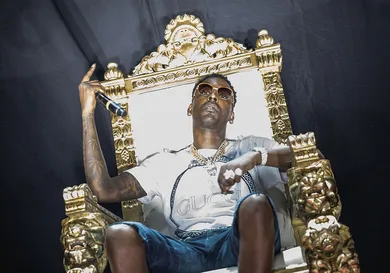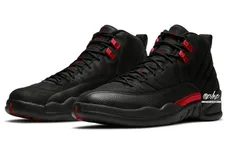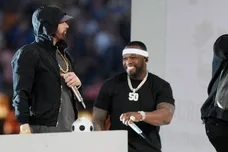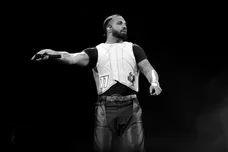On the 20th of October, Young Dolph released his most recent project Thinking Out Loud, not long after the artist had recovered from a series of gunshot wounds sustained during an incident in California. In the past year alone, Young Dolph has released several studio projects, mixtapes, a collaborative full length with Berner, thus, continuing to maintain himself as one of the hardest working acts in rap. The Memphis-born Adolph Thornton has been rapping for what’s approaching a decade in the industry, yet a great many have only been exposed to Dolph within the last few years. He’s a close friend and collaborator with one of the biggest rappers in the game, Gucci Mane, and has been on tracks with veterans and rising stars alike, all the while holding his own. But for those who are out of the loop, you might be asking, where in the world did this Young Dolph guy come from anyway?
Here at Hotnewhiphop.com, we’ve comprised a list of records that can help you understand just who Young Dolph is as an artist, or else, maybe show you some of the records you haven't been able to hear on the radio, ones that have earned him a massive cult fanbase who continue to support him from year to year. After all, maybe you heard singles such as “Preach,” “Get This Money,” “Get Paid” or “100 Shots,” and you’re not quite convinced. So perhaps its the records we’ve cultivated, ranging back from his days when he was unknown outside of Memphis, to some of the more choice selections on the mixtapes that helped boost him to stardom, or even guest features where he got a chance to steal some of the spotlight from bigger names, that can give you an appreciation for the self-proclaimed King of Memphis, Dolph Obama.
Scroll through, and let us know your favorite Dolph cut, deep or otherwise.
“Hotter Than A Crack Pot” (2008)

For a lot of people, Young Dolph is probably a name they’ve heard more frequently in the last 3-4 years, recognizing him for collaborations with some of the biggest names in Atlanta. However, Dolph has been rapping for something close to a decade now, and while the fame might be pretty recent, the quality music certainly wasn’t. Even on his debut mixtape, Paper Route Campaign, Dolph knew how to make street bangers. This warped Memphis-style take on a Tupac classic, featuring an even younger Dolph just as confident then as he is now, could easily slot next to any of his more familiar hits in a playlist without anyone batting an eye.
“Flavor” (2010)

After a few years of grinding, Young Dolph’s rap career was officially kicking off, and the prodigious work rate that would define his later years so significantly was also beginning to boom. “Flavor” is an early highlight, the beginning of Dolph’s frequent collaborations with the Memphis hitmaker and one of the greatest producers of the trap era, Drumma Boy. Playfully, Dolph brags about cycling through all different kinds of women, and uses an uncharacteristically Project Pat-reminiscent flow while Drumma, likewise, turns in one of his most Juicy & Paul-like early productions. It’s a key example of Dolph’s wicked sense of humor starting to emerge in his raps, comfortably alongside all of the street lyrics and tough talk, one that would only get more honed in with time.
“Booked Up (ft. Gucci Mane)” (2011)

“Booked Up” is another early milestone for Dolph in that it's the first collaboration with the man who was an obvious career model for Dolph, as well as his one-day frequent collaborator, Gucci Mane LaFlare. It was a long time until Dolph was at the level where he could sound close to Gucci’s equivalent as a rapper, but it should be noted that Dolph has no problem holding his own on the hook and for the majority of the song next to the man who’d come to redefine the trap rapper. Also should be noted that by this point, Dolph’s infamous “uh-Huuuuh!” adlib was already hovering all over his records as his swagger was more than exceeding his pace in the rap game. Considering this is Dolph at a mere 3 or so years in the industry, already collaborating with the biggest producers and rappers in the game for that era, you can tell the trajectory for success was pretty much guaranteed.
“Thinkin Like Pac Feelin Like Biggie” (2011)
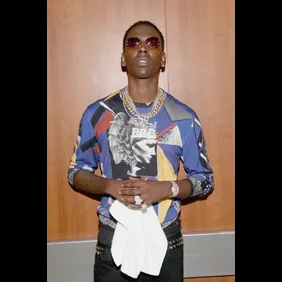
Young Dolph’s greatest strength might be his personality; haters will complain that Dolph as a rapper isn’t flashy enough in terms of technique or in vocabulary, relegating him to just another street rapper. In that regard, he’s more than following in the footsteps of obvious influences such as Gucci Mane and Project Pat, in keeping an aggressive pace despite all the criticism and sticking to his guns as a rapper. But it doesn’t seem preposterous to think Dolph doesn’t care about rap, especially when you hear older Dolph material like “Thinkin Like Pac Feelin Like Biggie.” Over an apocalyptic swarm of a beat, Dolph sounds ready to take on all comers and that personality in the din really sells itself better than his lyrics ever could.
“Much Deeper” (2012)

In 2012, Young Dolph dropped his A View To A Kill mixtape, a joking reference to another famous Dolph (actor & martial artist Dolph Lundgren’s cameo in the James Bond movie of the same name), it was perhaps a turning point for Dolph’s early career. The features were slightly more diverse and invested than the ‘rental’ feel on earlier mixtapes, and the production was a lot more widespread in style than typical trap anthems. But at this point, one can really hear Young Dolph stretch himself as a rapper and take music more seriously in ways beyond being a constant workhorse, but as an artist. “Much Deeper” is a bluesy introspective track in the style of Scarface or Lil Boosie, the kind of thing Dolph’s detractors would probably laugh at for suggesting he might try. Yet, when he talks about growing up in a broken home and turning to the streets, the listener is truly able to recognize the man Adolph Thornton Jr. inside the Young Dolph persona.
“Sky High (ft. Juicy J)” (2012)
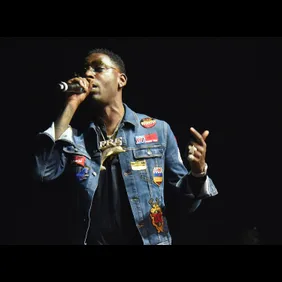
The city of Memphis has a legendary history of music, and their output in rap has certainly been nothing short of the highest caliber as well. Names like Eightball & MJG, Three Six Mafia, Jazze Pha and more have helped keep Memphis in the charts, but sometimes tensions amongst the fellow artists emerge due to a ‘small pond big fish’ sort of pressure system. DJ Squeeky and the Three 6 camp were plagued with issues for years, and yet somehow in 2012 the unthinkable happened; Squeeky’s frequent collaborator, Young Dolph, got Juicy J (who’d collaborated with Dolph before by that point) to ride out over his former rival’s production. Most importantly, the record slaps, but it's nice to know that for all the controversy that surrounds Dolph, he’s able to help these icons of his city put aside their differences and help make great music together.
Starlito - Gone (ft. Young Dolph) (2012)

It's one of those rare pairings that don’t necessarily look right on paper. Starlito’s a rap fan’s rapper who's enjoyed a massive cult following based on wordplay and lyricism, even back at the beginning of the 2010s thanks to bloggers lamenting his unfair languish on Cash Money Records. Dolph, at that time, was certainly popular in the streets of their same state of Tennessee, but the internet wasn’t exactly tuned into his work, with such an overwhelming number of trappers dominating the rap scene at the time. A bit ironic considering Lito’s former Memphis sponsor would become Dolph’s rival in a matter of time, “Gone” is a monumental record with both these artists in top form and their considerably disparate approaches meshing together in a surprisingly perfect blend.
“Blow Sniffer” (2012)

One of the most interesting aspects of Young Dolph’s career is his ear for beats. Most rappers as they continue to get famous decide to play it safe and stick with whatever the rest of the industry is doing, in the hopes of maybe getting lucky and scoring ‘the big hit’ off the strength of the trend rather than making their own waves. Dolph on the other hand, seemed to go his own way; not quite going left-field but instead making a series of harsher, weirder records in which he found himself making a home in some of the more intriguing but far from commercial production of the day. A record like “Blow Sniffer” with its harsh synths and strange melodies isn’t exactly a far-cry from what the likes of Mike Will or Lil Lody were trying to do with the trap template at the time, but it's no surprise that for all its strengths, a record like this wasn’t quite a commercial smash.
“Ride Or Die” (2013)

What really helps Dolph continue to rise and garner fans as a rapper is the guy is truly a descendant of old school Memphis. No offense to your Kia Shines or the like, but for a long time, Memphis rappers were working their damnedest to make sure they blended in with whatever was going on in Atlanta or on a big label, rather than maintaining that old school ‘get crunk’ spirit that’d helped Southern Rap become a much bigger force in the early part of the new millennium (even if it took Atlanta producers stealing it from them). However, despite following the times, Young Dolph tracks never stop feeling like he’s working to get the club buck over everything. Take “Ride Or Die,” produced by KE On The Track, best known for his anthemic cheery futuristic-style beats, now turned into a menacing dirge as Dolph shouts about getting ready to go to war. Maybe the guy isn’t the ‘king’ of Memphis to some listeners, but you can be sure that he’s never stopped representing the city in every aspect of his music.
“Trappin Out A Mansion” (2013)

Perhaps Gucci Mane was the one who inevitably befriended and worked with the Antichrist Superstar back in the day, but I think the wilder mental image is that of Dolph bragging about listening to Marilyn Manson on “Trappin Out A Mansion.” While yours truly is the kind of geek who wants to ask if Dolph is more of a “Lunchbox” or “Coma White”-era fan, perhaps it's better to leave things to the imagination. What we know for sure is that the record itself has Dolph sounding far from lucid as Drumma’s beat lurches with a similarly druggy pace, while spiraling off out of orbit, and while a classic among Dolph fans that helped further establish him as a top name in southern rap, surprisingly never got the video treatment? Maybe they were holding out on a cameo from Marilyn himself.
“Get It Back” (2013)
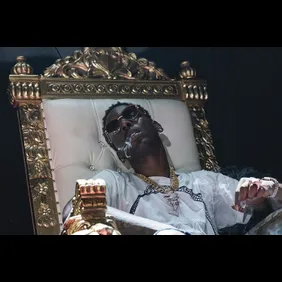
Speaking of Radric, it was around this time that the street rap icon agreed to work on a joint mixtape with Dolph, the often underappreciated EastAtlantaMemphis tape. A record from a period where both Dolph and Gucci were at peak productivity and both were in a considerable hot streak of quality, in a sense it serves as a passing of the torch where Gucci was able to comfortably acknowledge Dolph as a star on the rise, after having continuously been the one to declare so many other rap icons ready for stardom. “Get It Back” features Dolph as confident as ever, over some rather eclectic 808 Mafia production. However, like a lot of the output from this era of 1017, it also doesn’t feature Gucci, but instead has an uncredited OG Boo Dirty verse (who does quite well, but simply just isn’t the guy we came here to see). Still, its one of many bangers on a highly essential record in Dolph’s growth as an artist and does its job no matter who else is paired up with Dolph Obama.
“George” (2014)
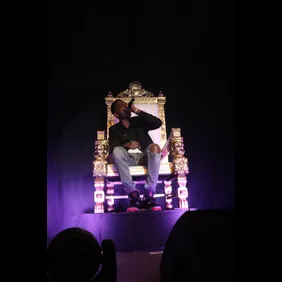
With 2014, Dolph’s career was only continuing to unfold to bigger and greater successes. Two of his solo singles “Preach” and “Get This Money” had gone viral and started to work to translate him beyond just the south or the trap sphere, and into the general rap game. Certainly the cosigns from the likes of 2 Chainz and Gucci Mane weren’t hurting him by any means, but by this point Dolph’s mixtapes had become consistent and were some of the strongest in the industry while many of the former A-Listers were starting to turn in diminishing results. Just take a look at “George” from his High Class Street Music 4: American Gangster tape, produced by K Camp and Future collaborator Will-A-Fool. Over surging keys and bizarre bubbling noises, Dolph never sounds anything short of menacing even with the cartoon sound effects, a kind of contrast that most rappers wouldn’t dare work around, and even fewer would manage to make work for them.
“Young N***a (ft. Fiend)” (2014)
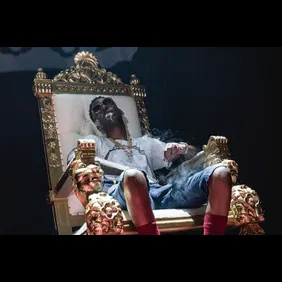
Dolph is a rapper of gravitas, with a commanding presence and a particular sense of rap history. Sure, he might’ve had his twitter issues with “Petty Rock” once upon a time, but in his music he’s been known to cite from legends across rap history, such as Tupac, Eightball & MJG, NWA, Wu-Tang Clan and others. Apparently No Limit too, because “Young N***a” is probably most eye-catching when you realize it features none other than Mr. Whomp Whomp himself, Fiend AKA International Jones. When paired up with Dolph’s trap boisterousness, Fiend opts for a mid-ground between his more laconic hip-hop later-period material, and his earlier brand of up-tempo fight music, and a meeting of two generations of rap goes off without a hitch (for inquiring minds, Fiend’s own Dolph featuring single “Actin Up” is a banger of note as well). And to think Dolph was accused of not paying respect to the rappers who came before him?
Rich The Kid - Austin Powers (ft. Young Thug & Young Dolph) (2014)
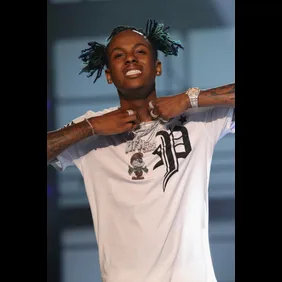
Rap is incredibly weird sometimes. “Austin Powers” is a meeting of three characters all with vivid imaginations and particular sort of personalities that don’t necessarily seem like they’re going to fit each other. On the one hand, you have an incredibly loopy sounding Rich The Kid cramming in a bunch of references to the spy parodies of Mike Meyers. Then on another hand, you have the ever-eccentric Young Thug bragging about wearing Versace while dressing his girl in Old Navy before yodeling from Mars. And then you have Dolph! Dolph here isn’t exactly doing anything out of the ordinary, and if anything, he just sounds typically boastful and buoyant on this surging Young Chop production. At the same time though, you really appreciate how even in the face of such wildly different rappers, Dolph has absolutely no problem being himself.
“Havin Thangs (ft Peewee Longway)” (2015)

The subtle details of Dolph are ultimately the real key to his 'total package.' Any rapper could try to rap over thudding beats about keys, weed and guns, and with enough consideration they’d get themselves a certain amount of fans. But Dolph’s character becomes a very familiar sort of brand of cool, with his erratic adlibs demanding you ‘GO GET THE MONEY’ while he casually addresses all sorts of fine details. On a track like “Havin Thangs” featuring the nimble-tongued Peewee Longway, you could easily imagine the seemingly laconic Dolph getting left in the dust by Mr. Blue Benjammin. However, despite the half-lidded sound of his Pimp C-inspired hook, Dolph is far from sleepwalking on the track, and does his best to keep control of the record with his casual flexes and intricate details. Because not every rapper is talking about nervously sending drug couriers off across planes, only to calm themselves back down into typical rapper cool.
“16 Zips” (2015)

As the sounds of trap started to warp and grow stranger with the second half of the decade emerging, one might think Dolph’s career was in trouble before it even began. It was quite the contrary though, because the erratic mind of Dolph was somehow perfectly suited for the equally wild-style production of TM88. “16 Zips” off the mixtape of the same name, is a grave, looming presence of minimal structure and unnerving effects with plenty of room to get lost. Unless you’re Young Dolph, whose bellowing about how “EVERY FAMILY GOT A DOPE FIEND,” comparing himself to Ike Turner, bragging about his smoke quality… And I don’t even think that’s more than a minute into the record on his part. By this point in his career, Dolph’s success was guaranteed and it seemed that at least sonically, he was capable of maneuvering past any potential obstacles.
“No Matter What (ft. T.I.)” (2015)

One of his strongest projects, 16 Zips, might rise over most of the Dolph's catalog due to a powerful sense of confidence and delivery that overwhelmed some of the stiffness that categorized a majority of his material. With another top-tier TM88 beat, and a high level performance from none other than one of the godfathers of trap music himself, Mr. Clifford “T.I.” Harris, “No Matter What” works perfectly. Over that hyper-distorted beat, Dolph sounds particularly unhinged and dangerous, his voice breaking into a rare scream that’s unsettling for fans who are so used to him providing the most minimal effort. It’s a tough one from anyone, but from someone like Dolph who’s often accused of repetition, it's an example that he always has plenty of surprises up his sleeves.
Young Thug - Never Had It (ft. Young Dolph) (2015)
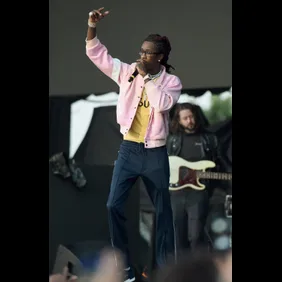
Young Thug has never been the most conventional rapper in the world, but he’s been a street rapper underneath all of his more isolating qualities, no matter what. It's the main reason why Young Dolph and Young Thug are surprisingly compatible in the few occasions they’ve managed to cross paths, and one hopes that maybe a joint project a la Rich Gang could occur for these two rappers, who’ve both been co-signed by the likes of Gucci and have huge cult followings. “Never Had It” off of Thug’s critically acclaimed Barter 6 is as good an example as to why such a collaboration would be so fruitful, with Dolph’s rigid in-your-face approach a perfect counter to Thugger’s florid relentless flowing. Perhaps one day, but until then, it's tracks like these that indicate what could be.
“USA” (2016)

After a long, storied career full of hits, it was only last year when we were finally treated to an official studio album by Young Dolph. The aptly or perhaps, dauntingly, named King of Memphis was a triumph, a sleek record featuring the rapper happily embracing the mainstream on his terms. “USA” is one of the hallmarks of the record that makes it so engaging and grants longtime Dolph fans a sense of fulfilment; over an atypical Zaytoven production, full of radio static and creepy keys, Dolph is about as playful and as menacing as his friend and mentor was over Zaytoven’s classic material a decade prior, yet still maintaining his own individual stamp. It's a shining example of the modern Dolph, in both how far he’s come and how little has managed to change.
“SMH” (2017)

2017 might be the weirdest chapter in Young Dolph's career thus far because on the one hand, there’s no way to mince the fact that with all of his hard-earned fame and fortune, the biggest events thus far have been the multiple attempts on his life. While his recent Thinking Out Loud project just dropped (reviewed by us here) just dropped in the wake of yet another attempt on his life, perhaps his strongest project of all time might be this year’s Bulletproof, made after an incident in Charlotte involving 100 bullets almost taking his life. Rare that records are front-to-back so strong in rap, it's also an accomplishment that after coming so close to death, Dolph continues to sound more confident and even more aggressive. Ending Bulletproof with an acapella freestyle might be the one of the boldest moves on a mixtape with a strange and experimental take on Memphis fight music, but it makes perfect sense. Even if the 90 seconds or so are completely uncommercial, it's hard to imagine someone listening to this and not recognizing Young Dolph at the peak of his powers, and knowing it damn well.
